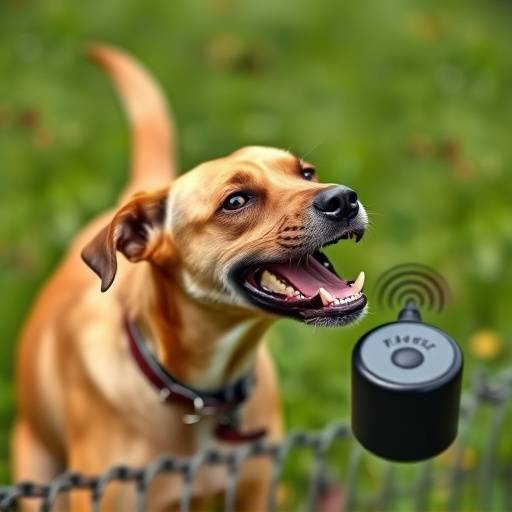Sonic dog training uses high-frequency sound waves for behavioral correction, teaching pets alternative responses through inaudible triggers. Adhering to stringent Dog Repellent EMC Certification Requirements ensures safe and effective operation, minimizing health risks for dogs. This method, employing ultrasonic sound waves (above 25 kHz), requires responsible implementation, including selecting suitable products, consistent positive reinforcement, patience, and commitment to canine well-being.
Sonic dog training, a revolutionary behavioral correction method, offers a humane alternative to traditional training. This article delves into the intricacies of this innovative approach, focusing on its effectiveness for dog repellent applications. We explore the fundamental principles and demystify the process, ensuring responsible implementation. Unlocking Dog Repellent EMC Certification Requirements is key to using safe and effective tools in the market. By understanding these aspects, pet owners can harness the power of sonic training while adhering to industry standards.
- Understanding Sonic Dog Training: The Basics of Behavioral Correction
- Dog Repellent EMC Certification: Unlocking Safe and Effective Tools
- Demystifying the Process: How to Implement Sonic Dog Training Responsibly
Understanding Sonic Dog Training: The Basics of Behavioral Correction
Sonic dog training, also known as ultrasonic dog training, is a form of behavioral correction that uses high-frequency sound waves to discourage unwanted behaviors in dogs. This non-invasive method employs a device that emits an inaudible sound to the canine, typically only perceptible to them, when certain actions are performed. The principle behind this technique is not to harm or frighten the pet but to interrupt their behavior pattern and teach them an alternative response.
The process involves setting specific triggers, such as barking excessively or jumping on furniture, and activating the sonic repellent device accordingly. This technology is designed with safety in mind, adhering to strict Dog Repellent EMC Certification Requirements to ensure it poses no harm to animals or humans. By utilizing this innovative approach, dog owners can effectively manage their pets’ behavior while promoting positive reinforcement techniques in training.
Dog Repellent EMC Certification: Unlocking Safe and Effective Tools
In the world of canine behavior modification, using safe and effective tools is paramount. One such tool gaining traction is Dog Repellent technology, designed to correct unwanted behaviors without causing harm. However, not all repellents meet the necessary standards for safety and efficacy. The Dog Repellent EMC (Electromagnetic Compatibility) Certification is a crucial requirement, ensuring these devices operate within defined parameters, minimizing potential health risks for dogs.
This certification involves rigorous testing to confirm that the repellent’s electromagnetic emissions comply with established guidelines. By adhering to EMC requirements, manufacturers can assure pet owners of their product’s safety and reliability. It’s worth noting that only certified Dog Repellents can claim to offer effective behavioral correction while maintaining a harmless approach, making this certification a game-changer in responsible canine training methods.
Demystifying the Process: How to Implement Sonic Dog Training Responsibly
Sonic dog training, while innovative, is not without its nuances and responsible implementation is key. The process involves using ultrasonic sound waves, typically above 25 kHz, that are inaudible to humans but irritating to dogs. This technology is designed as a gentle behavioral correction tool, aiming to deter unwanted behaviors like barking, jumping, or pulling on leashes by making the dog temporarily uncomfortable without causing harm.
To use sonic dog training responsibly, it’s crucial to understand and follow EMC (Electromagnetic Compatibility) certification requirements for such devices. This ensures safety and effectiveness. Look for products that meet these standards and are suitable for your dog’s age, size, and behavior needs. Additionally, consistent and positive reinforcement techniques should accompany sonic training to avoid any potential adverse effects or fear association. Remember, proper training involves patience, understanding, and a commitment to the well-being of your canine companion.
Sonic dog training, a specialized behavioral correction method, offers safe and effective solutions for managing canine behavior. Understanding the fundamentals, such as the role of Dog Repellent EMC-certified devices, is crucial for responsible implementation. By adhering to the certification requirements and learning best practices, owners can ensure these tools enhance their dogs’ well-being while addressing behavioral issues. This comprehensive approach allows for a harmonious relationship between pets and their owners, highlighting the importance of informed and ethical training methods in today’s world.
